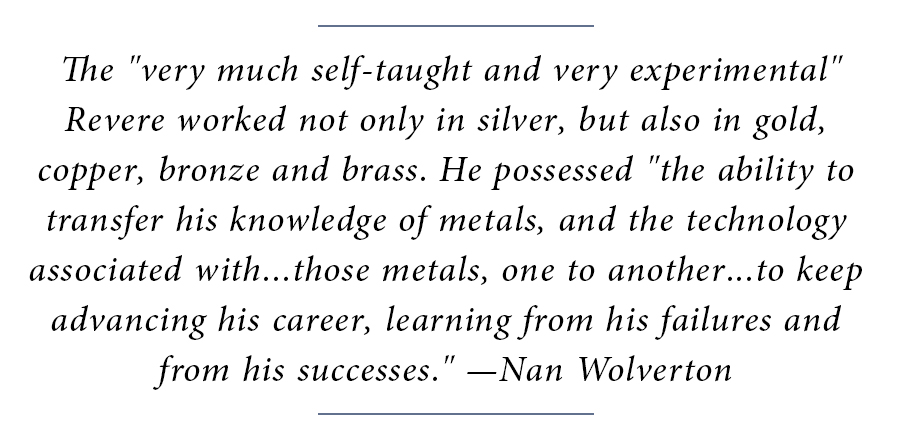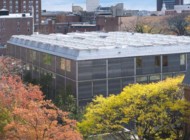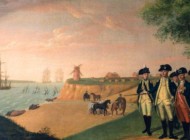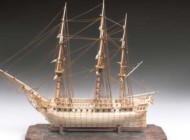![While Revere’s engraving was the first to be published, the propagandistic image circulated widely soon after the event, according to Hewes. Three versions by Revere and three versions by other printers are on display. “The Bloody Massacre Perpetrated on King-Street, Boston on March 5th 1770 by a Party of ye 29thReg[imen]t” by Paul Revere Jr (1735-1818), engraver; attributed to Christian Remick (1726-73), circa 1770-74. Hand colored engraving. Gilder-Lehrman Institute of American History.](https://www.antiquesandthearts.com/wp-content/uploads/2019/10/4_bostonmassacre_glc-843x1024.jpg)
While Revere’s engraving was the first to be published, the propagandistic image circulated widely soon after the event, according to Hewes. Three versions by Revere and three versions by other printers are on display. “The Bloody Massacre Perpetrated on King-Street, Boston on March 5th 1770 by a Party of ye 29thReg[imen]t” by Paul Revere Jr (1735-1818), engraver; attributed to Christian Remick (1726-73), circa 1770-74. Hand colored engraving. Gilder-Lehrman Institute of American History.
By Kate Eagen Johnson
NEW YORK CITY-A fabled messenger has galloped on to the scene to announce the impending arrival – not of the Redcoats – but rather the Sestercentennial of the American Revolution. With this 250th anniversary approaching, the American Antiquarian Society has organized “Beyond Midnight: Paul Revere,” currently on view at the New-York Historical Society until January 12. The traveling exhibition will then make its way to Massachusetts for a joint-display at the Worcester Art Museum and the Concord Museum before journeying to Crystal Bridges Museum of American Art in Bentonville, Ark.
The American Antiquarian Society’s Lauren B. Hewes, the Andrew W. Mellon curator of graphic arts, and Nan Wolverton, the director of both fellowships and the society’s Center for Historic American Visual Culture, co-curated the exhibition, co-edited the catalog and contributed essays to the volume. At N-YHS, the show has been coordinated by curator of decorative arts Debra Schmidt Bach.
As the title suggests, the exhibition and accompanying catalog offer a new take on the life, times and production of the artisan and entrepreneur best known as the Patriot proclaimer Henry Wadsworth Longfellow lionized through his poem “Paul Revere’s Ride,” published in 1861. The co-curators consider Revere (1735-1818) as an insurrectionist, a maker, a networker and mythic figure in their thematic presentation featuring more than 140 items and incorporating the latest research.
Central to the display is Revere’s engraving “The Bloody Massacre,” a depiction of occupying Redcoats firing upon a crowd of obstreperous but unarmed Boston civilians. This violent event, more commonly called the Boston Massacre, took place on March 5, 1770. It occasioned the death of five men and an explosion of collective rage. Revere purloined the image from Henry Pelham, who had given him a peek at his work-in-progress, enhanced it and beat Pelham to the punch by issuing his version first. Not long after, printmakers as far away as London were copying it.
March 2020 will mark the 250th anniversary of both the Bloody Massacre and Revere’s publication of the iconic print. Co-curator Nan Wolverton emphasized the symbolic importance of the exhibition appearing in Massachusetts during the spring of 2020. “We wanted to celebrate that event and to get a little ahead of that by opening the show in New York…This is a way of drawing attention to the collections here at AAS.” Co-curator Lauren Hewes added that “the AAS is in a unique position to be able to organize the exhibition because our holdings are so strong with Revere’s engraved works on paper. Those two things, the anniversary and the collections, come together very nicely for us to go ahead and expand beyond ‘the Massacre print’ and beyond ‘the Ride’ and talk about Revere in a broader sense for a new generation.”
The American Antiquarian Society, founded in Worcester, Mass., in 1812, is both a learned society and a major independent research library specializing in American history and culture before 1876. The institution has amassed more than four million items in its attempt to assemble a comprehensive collection of every piece of printing made in what was once British North America prior to, and including, the Centennial year. In conversation, both Wolverton and Hewes emphasized how the traveling exhibition will help AAS reach new constituencies and build national awareness of its collections and programs.
But back to the man of the hour. The Boston-born “jack of all trades” was the son of a French Huguenot émigré, who changed his name from Apollos Rivoire to Paul Revere so that the “Bumpkins should pronounce it easier,” and Deborah Hitchborn, whose merchant family helped support her eldest surviving son at certain points in his life. At age 13, Paul Revere Jr began to train with his father to learn the art and mystery of working gold and silver. He had not yet completed his apprenticeship when his father died in 1754, forcing him to assume responsibility for the shop and his mother and siblings.
After a stint in the Massachusetts artillery during the French and Indian War, Revere returned to the silver shop in 1756. During these years, the resourceful artisan also created copperplate engravings and practiced dentistry. He joined the Sons of Liberty and participated in the 1773 Boston Tea Party.
Along with his less famous colleagues William Dawes and Samuel Prescott, Revere was part of a human “emergency broadcast system” set into motion by the Committee of Safety on April 18, 1775. Late that evening, the courier set out to alert those sympathetic to the American cause that Redcoats were marching out of Boston and into the countryside. He warned Samuel Adams and John Hancock in Lexington that they might be arrested (which turned out to be a bit of false intelligence) and anyone who would listen that the troops were headed to Concord where they would seize or destroy the local militia’s cache of munitions. He announced “the regulars are coming out,” according to one first-person account, rather than the more electrifying “The British are Coming!” later credited to him. Revere made it a bit beyond Lexington before being captured by British troops, who eventually released him, but kept his horse.
Far less glorious was his service during the Revolutionary War. In 1779, as head of the artillery regiment of Massachusetts, Revere was involved in a botched military campaign in Maine and was accused of misdeeds. To clear his name, Revere requested a court martial trial, through which he was exonerated.
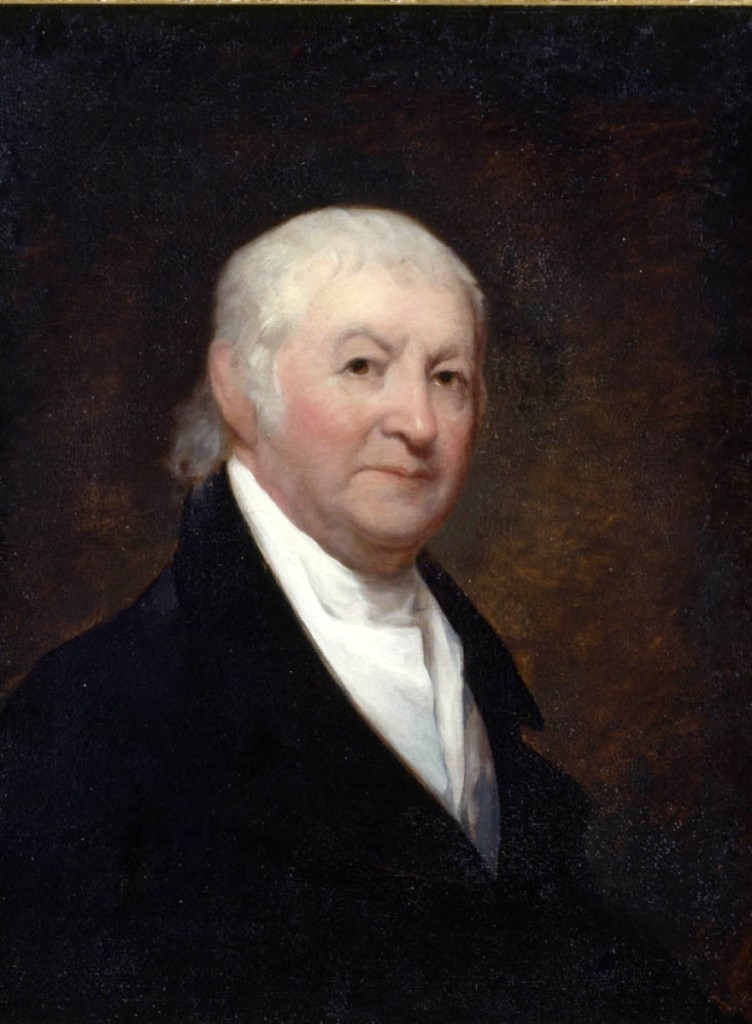
Co-curator Hewes stated that “we want to open up the conversation about Paul Revere, the Revolution and the Industrial Revolution in the United States.” “Paul Revere (1735-1818)” by Chester Harding (1792-1866) after Gilbert Stuart (1755-1828), circa 1823. Oil on canvas. Massachusetts Historical Society, Gift of Paul Revere Jr, 1973.
After the conclusion of the war, Revere expanded his business enterprise to include a hardware shop; a foundry for casting bells, cannons and other base metal objects; and the first commercially viable copper rolling mill in the United States. In the sphere of civic contribution, he served as grand master of the Massachusetts Grand Lodge, president of the Massachusetts Charitable Mechanics Association, Suffolk County coroner and president of Boston’s Board of Health.
Wolverton explained how the exhibition addresses the underappreciated aspects of Revere’s life, particularly his role as a maker, with much of it devoted to “the things that he made, and the variety of things that he made. It is a very interesting story about a craftsman in both pre- and post-Revolutionary Boston, but also about the global story associated with craftsmen in Boston at this time.” She related that Revere is among the best documented craftsmen of his era, because Longfellow’s poem made him famous and so collectors treasured materials associated with him.
Historical evidence indicates that Revere created more than 90 different forms in silver alone. At N-YHS, glittering spoons, a pair of shoe buckles, a child’s whistle and teether with bells, a spur, christening basin, a pair of beakers and two tea services are among the objects representing his skill and range in this medium.
But the metallurgist’s production was even more diverse overall. Also showcased are a gold thimble, a pair of brass and iron andirons stamped “Revere & Son,” a bronze courthouse bell cast at the Revere Foundry, a pair of gunner’s calipers in brass and a fragment of sheet copper rolled at the Revere mill in Canton, Mass.
Both co-curators praised Revere’s facility with metals. Hewes observed that “he was amazingly adaptable as a maker. He was comfortable working on copper plates to make engravings, which you have to do in reverse so that they print properly, but then he could also engrave on a three-dimensional object like a cann, or a tankard or a salver with ease. He didn’t have any problems moving from one type of engraving to the other.”
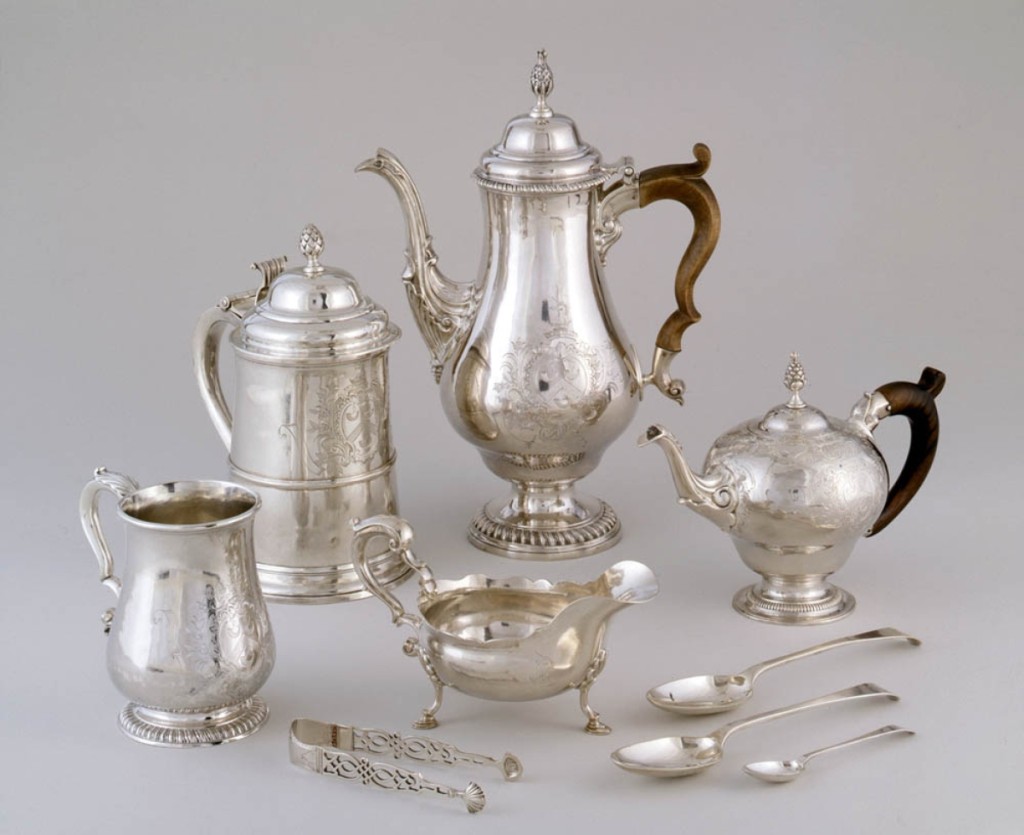
This beverage service of 45 pieces was the largest commission Revere executed. Coffeepot, tankard, teapot, butter boat, tea tongs and spoons made for Lois Orne and William Paine by Paul Revere Jr (1735-1818), 1773. Silver, wood. Worcester Museum of Art, Worcester, Mass.; Gift of Frances Thomas and Eliza Sturgis Paine, in memory of Frederick William Paine; Gift of Dr and Mrs George C. Lincoln of Woodstock, Conn., in memory of Fanny Chandler Lincoln (1959); Gift of Paine Charitable Trust (1965).
Wolverton followed that the “very much self-taught and very experimental” Revere worked not only in silver, but also in gold, copper, bronze and brass. He possessed “the ability to transfer his knowledge of metals, and the technology associated with…those metals, one to another…to keep advancing his career, learning from his failures and from his successes.”
Turning from the exhibition to the catalog, it is pleasing, but perhaps no surprise, that an institution devoted to the history of printing has published such a high-quality catalog. Less expected, but equally satisfying, is the catalog’s immediate, accessible prose. The directness of the text, coupled with the many color photographs, gives it great appeal.
Is “Beyond Midnight: Paul Revere” a harbinger of a rekindling of interest in Americana? Only time will tell. If this exhibition is any indication, today’s curators can find considerable relevance in Revolutionary War figures, their activities and their material world and are eager to make the subject exciting for contemporary audiences.
In summary: “Beyond Midnight: Paul Revere” can be seen at the New-York Historical Society until January 12. N-YHS is at 170 Central Park West at Richard Gilder Way (77th Street). For more information, 212-873-3400 or www.nyhistory.org.

